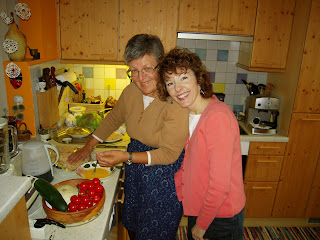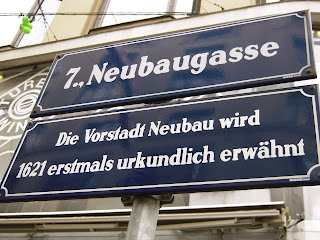 Vienna’s Central Cemetery I
Vienna’s Central Cemetery IThe enormous Vienna Central Cemetery (Zentralfriedhof) was created in 1874. Sprawling over 2.4 lush square kilometers, the Zentralfriedhof is the final resting place for over 250,000,000 souls, notably, Austrian mayors, presidents, authors, architects, and composers such as Strauss (father and son), Brahms, and Beethoven and Schubert (who were both moved from other cemeteries to the Zentralfriedhof’s “circle of honor” in 1888). Wien’s Zentralfriedhof, like other European cemeteries, has a friendly, peaceful atmosphere. On our two visits, we’ve seen individuals serenely strolling the seemingly endless paths, or briskly walking in pairs, and as families, clearly enjoying the beautiful vegetation, the fresh air, and the impressive history. Although at times the Zentralfriedhof must be a place of sorrow and melancholy, during our visits we’ve sensed a strong feeling of contentment, if not downright happiness on the part of most visitors.

During our second visit we began to see that, in many ways, the Zentralfriedhof is a microcosm of Vienna. For instance, like Vienna, the Friedhof feels intimate despite its size. You could walk all day, and not see everything, yet oddly enough, the grandeur doesn’t feel overwhelming. Perhaps this is because, like the city in which it rests, the Zentralfriedhof is made up of neighborhoods, each with its own unique personality. Meandering the paths of the Zentralfriedhof is akin to roaming the gasses of Vienna – extravagant Hofburg-like monuments tower alongside sleek modern memorials. But regardless of the style, all gravesites are beautiful in their idiosyncrasy; as can be seen in our photos, you rarely see the same granite angel twice. Additionally, just like the city’s living residents, the residents of the Friedhof are in very close proximity to one another. Space is at a premium, so there is little if any distance between plots. Still, although neighbors are close, you needn’t worry about how things look because most plots, even the REALLY old ones, are purposefully and meticulously maintained – as evidenced by the woman we saw cutting grass with scissors.








































